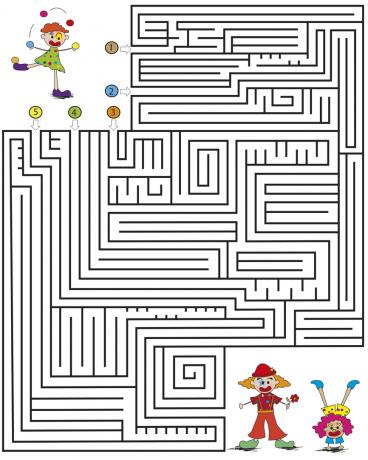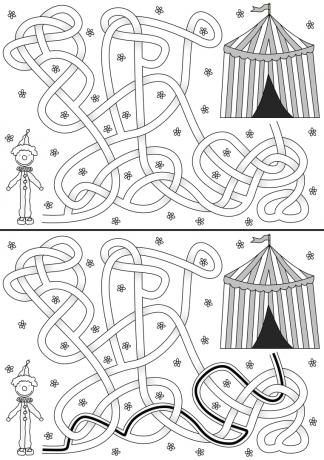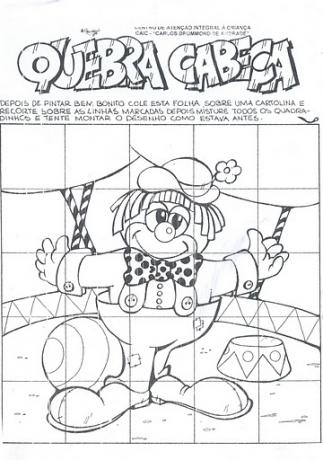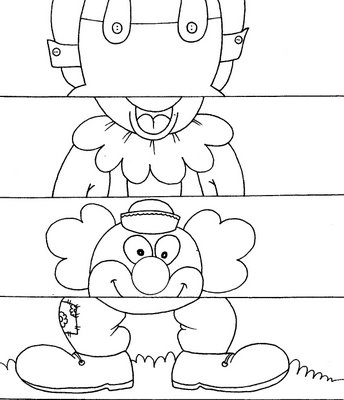If you're looking for circus activity tips for early childhood education, you've come to the right place! In this article, we'll teach you how to make engaging and playful activities inspired by the world of the circus, providing children with moments of learning and fun.
A fun and challenging activity is the juggling workshop. Using balls, clubs or light objects, children can learn to manipulate them sequentially, throwing and catching them deftly. In addition to developing fine motor coordination, juggling also stimulates balance, concentration and teamwork.
To create an authentic circus atmosphere, you can set up a themed space with vibrant colors, colorful curtains and upbeat music. Start by teaching the children to hold a ball in each hand and do simple movements, such as passing a ball from one hand to the other. As they gain confidence, introduce new challenges, such as juggling two balls in one hand or more complex tosses.
An interesting variation is the use of clefs, which are short, light sticks, usually made of plastic or wood. With the clefs, kids can experiment with different throwing patterns and further develop their dexterity. Remember to encourage constant practice, valuing each child's effort and individual evolution.
In addition, the juggling workshop can be enriched with complementary activities, such as throwing games on targets or passing sticks between participants. This encourages interaction between children and contributes to strengthening social bonds.
Music is an essential part of the Circus. In this activity, children will have the opportunity to create their own musical instruments using recyclable materials, such as cans, plastic bottles, caps and cardboard. This experience not only stimulates creativity, but also promotes auditory perception and fine motor skills.
To start, provide the little ones with different recyclable materials and let them explore their sonic possibilities. Encourage them to experiment with different sounds and textures, encouraging discovery and individual expression. Explain the importance of musical instruments in the circus, highlighting the harmony and festive atmosphere they provide.
Then help the children build the instruments. For example, they can decorate empty cans with colored paper and ribbons, turning them into drums. Plastic bottles, on the other hand, can become flutes or rattles when filled with grains, sand or small sound objects.
After building the instruments, create moments of musical integration, inviting the children to play together in a small presentation. Encourage active listening by encouraging them to observe how each instrument contributes to the harmony of the group. This activity will provide playful and musical learning, awakening interest in music and collaboration.
Clown face painting is an activity that sparks children's creativity and imagination. It allows them to transform themselves into colorful and happy circus characters, exploring different facial expressions and experimenting with the art of makeup.
To carry out this activity, you will need water-based face paints, brushes, sponges and a mirror. First, explain to the children the importance of makeup in the circus, emphasizing the role of clowns in the fun interaction with the audience. Show them examples of different styles of clown face painting, highlighting the vibrant colors and distinctive features.
Then provide the children with the necessary materials and encourage them to create their own face painting. Let them choose the designs, colors and details, encouraging creative expression. Give directions and suggestions when necessary, but allow each child to develop their own interpretation.
While the children are putting on makeup, take the time to talk about the clowns' emotions and facial expressions. Encourage them to explore different expressions such as joy, sadness, surprise and amazement. This will help in the development of emotional perception and the ability to express yourself through facial expressions.
Also, have a parade or performance time where children can show off their clown face paint. Value each creation and highlight the importance of artistic expression and fun in the circus.
Puppet theater is a delightful activity that allows children to unleash their imagination and develop language and narrative skills. In this activity, they can create their own circus stories and act them out using puppets made from simple materials.
To start, encourage children to think of characters and situations related to the circus, such as clowns, jugglers, trapeze artists, animals and fun shows. They can draw and cut out the characters on cardstock or cardboard, and also create simple backdrops using colored cardboard or brown paper.
After creating the characters and scenarios, promote a moment of rehearsal and improvisation, in which the children can bring their stories to life. Encourage them to explore different voices, gestures and facial expressions to represent the characters, creating a magical and engaging atmosphere.
In addition, you can encourage the creation of dialogues and the elaboration of a plot, allowing children to exercise their creativity and communication skills. Encourage them to share their stories with peers, promoting interaction and mutual respect.
At the end, organize a small theater performance, in which the children can show their creations to other classmates and even to their parents. This activity stimulates self-confidence, artistic expression and teamwork, in addition to providing moments of fun and learning.
If you are looking for printable circus activities for preschoolers, we have a special selection for you! These activities are perfect to complement children's learning and provide fun moments in the classroom or at home.
1. Clown's Labyrinth: Print out circus-themed mazes and challenge kids to find their way to the clown. This activity helps to develop logical thinking and concentration.




2. Circus Word Search: Print word searches with words related to the circus, such as clown, juggling, trapeze artist, among others. Kids will love finding and marking the hidden words!


3. Letter painting: Print pictures of Circus scenes for the children to color. To make the activity more fun, add letters to the areas of the drawing and provide the corresponding colors. Thus, they will exercise motor coordination and identification of numbers and colors.

4. Connect the dots: Print out circus drawing sheets on which the children must connect the numbered dots to reveal the complete picture. This activity stimulates motor coordination and recognition of numbers in sequence.


5. Circus Puzzle: Print jigsaw puzzles with pictures of the circus and encourage children to put the pieces together. This activity develops patience, spatial reasoning and problem solving.








These printable activities are great options to enrich children's learning, providing educational and fun moments at the same time. Be sure to provide suitable materials such as crayons, scissors and glue so they can fully enjoy these circus activities!
This site uses Akismet to reduce spam. Learn how your feedback data is processed.